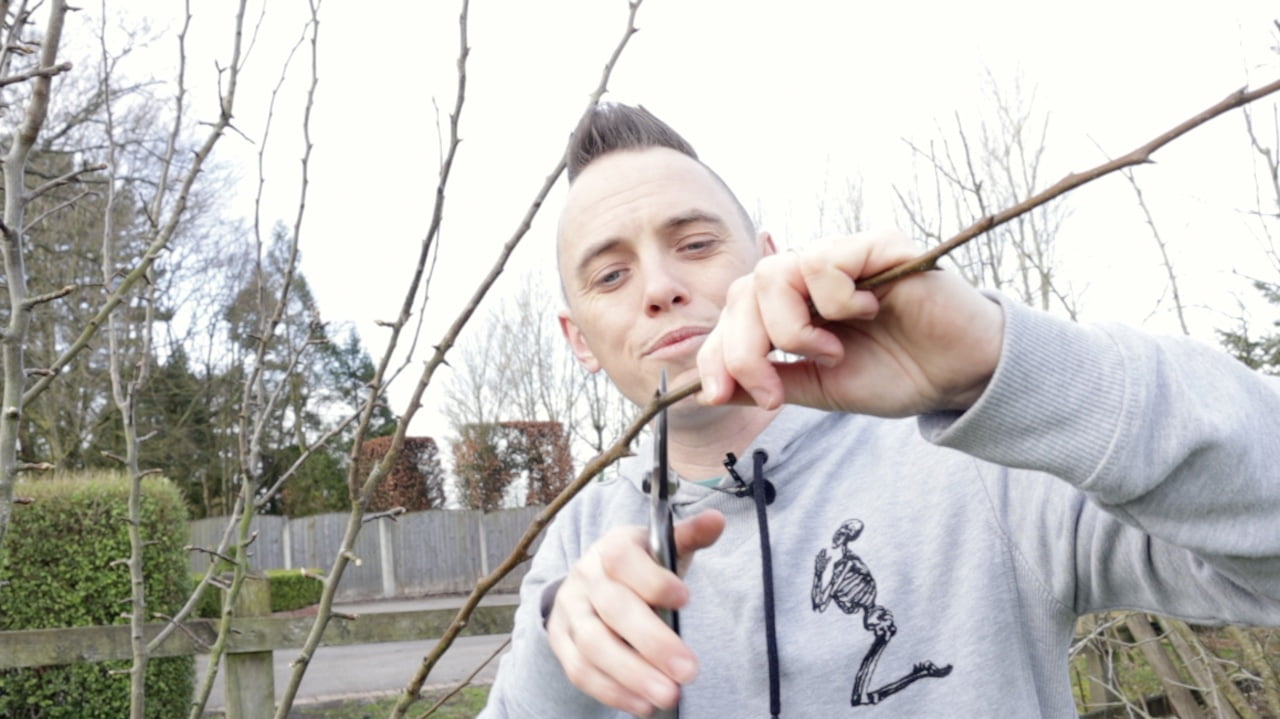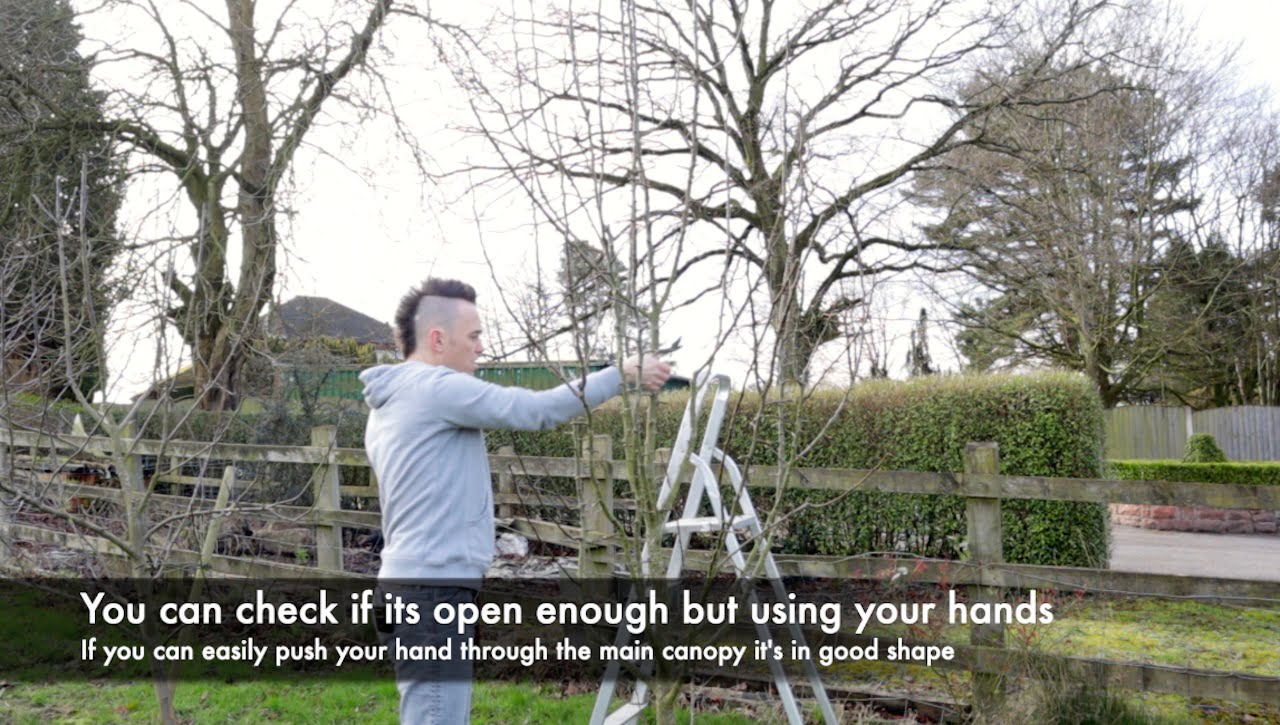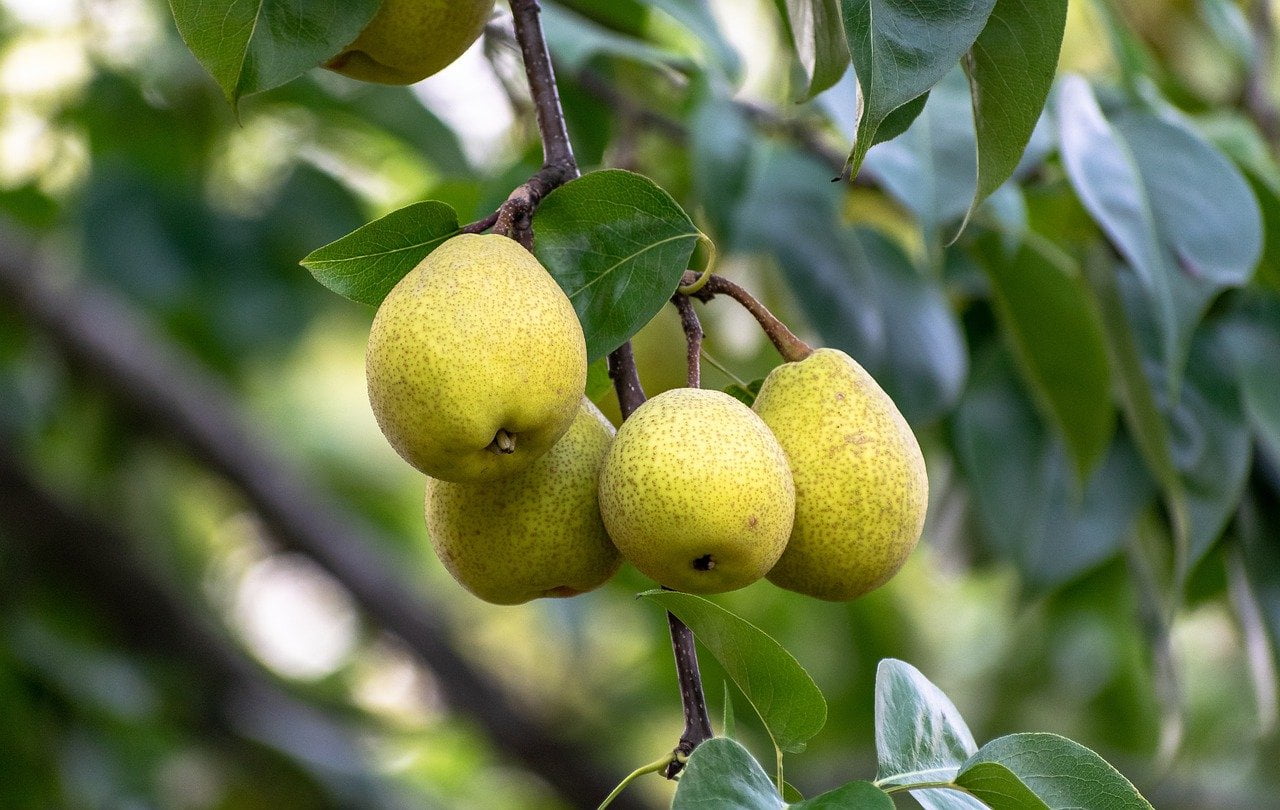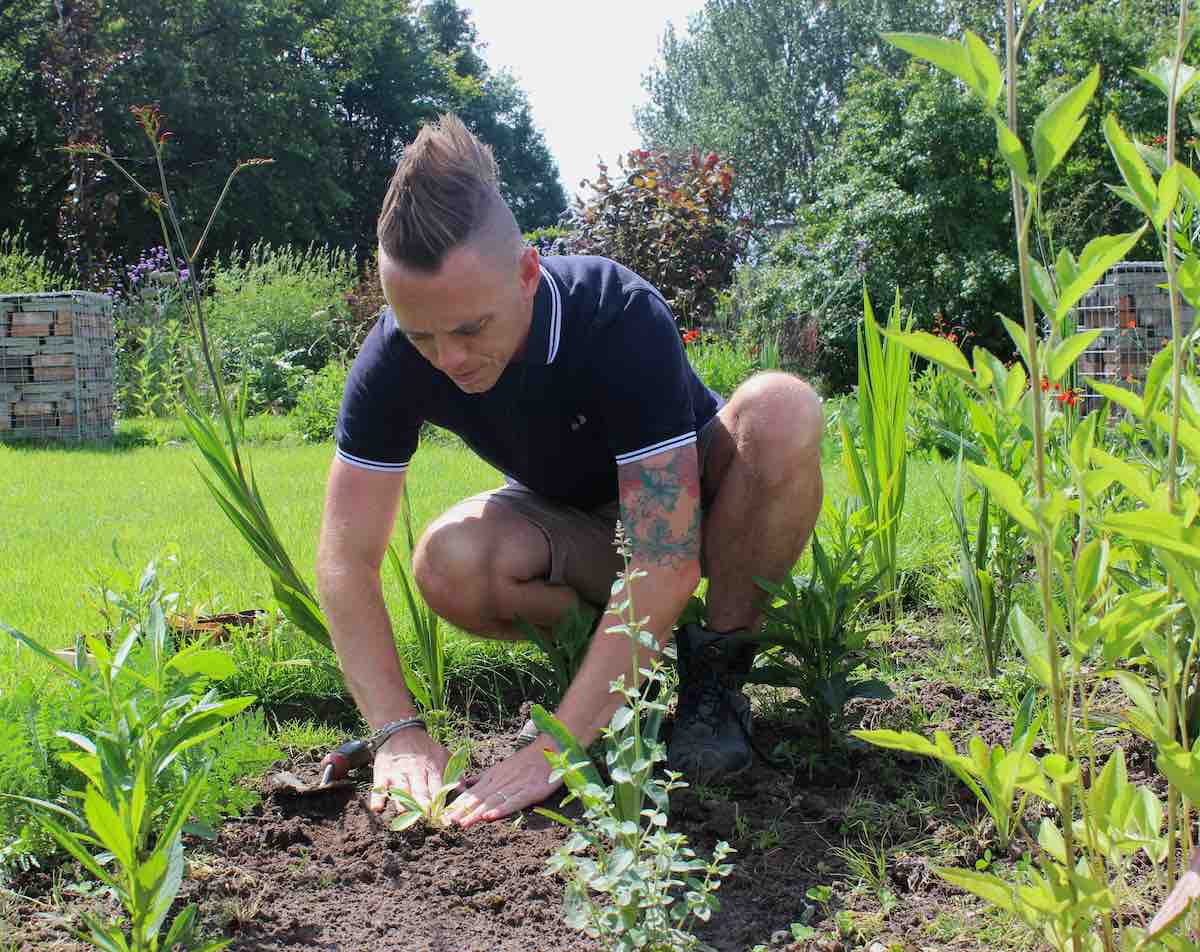Hi @lisa-fernando
Thanks for sharing your pictures of your pear tree with black spots on the leaves. I can confirm this is 'Pear Leaf Spot'. Caused by fungus. Let's look a bit closer at what this is, why it happens and how to treat pear back spot!
Pear leaf spot, also known as pear scab, is a fungal disease that affects pear trees (Pyrus spp.). This common plant disease primarily targets the leaves and, in some cases, can also affect fruit and branches. It causes black and dark brown spots on the leaves. It impacts the pear tree's vigour (fruiting ability) and can spread to other pear trees or fruit trees in your orchard, especially during the winter and in wet, windy weather.
The best method is timely tree pruning and good airflow, which helps reduce the occurrence and damage from pear leaf spot or leaf scab. Watch my video below on how to prune a pear tree correctly!
https://youtu.be/abE5LlAkFB8
What is Pear Leaf Spot?
Pear leaf spot is caused by the fungal pathogen Venturia pirina. The disease typically manifests as small, dark spots or lesions on the leaves of pear trees. These spots may start as tiny, olive-green or brownish flecks and eventually enlarge to form circular or irregular-shaped lesions. As the disease progresses, the affected areas often turn dark brown to black. It spreads really quickly if left untreated.
Symptoms of Pear Leaf Spot:
1. Leaf Lesions: The most common symptom is the appearance of circular to irregular dark lesions on the leaves. These lesions can vary in size but tend to be small initially.
2. Fruit Lesions: In some cases, pear leaf spot can affect the fruit, causing small, raised, and dark spots on the skin. This can make the fruit less aesthetically appealing and may reduce market value.
3. Twig and Branch Lesions: While less common, pear leaf spot can also infect young twigs and branches, causing cankers and dieback.
How to Manage & Treat Pear Leaf Spot:
Managing pear leaf spot involves a combination of cultural practices and, if necessary, as a last resort, chemical treatments:
1. Prune Affected Branches: Prune and remove any heavily infected branches or twigs during the dormant season (late winter or early spring) to reduce the disease's presence. Follow my guide here Lisa for a full guide on how to prune pear trees.

2. Rake and Remove Debris: Keep the area around the pear tree clean by raking and removing fallen leaves and fruit. This prevents the fungus from overwintering in debris.
3. Improve Air Circulation: Ensure proper spacing between trees to promote good air circulation. This helps reduce the humidity levels that favour fungal growth.

4. Water Wisely: Avoid overhead watering, as wet foliage provides an ideal environment for fungal spores to thrive. Especially with young pear trees or one-year-old whips. Instead, water the base of the tree.
https://youtu.be/VpIIaKM69eo
5. Fungicide Application: If pear leaf spot becomes severe and cultural practices alone are insufficient, consider applying a fungicide labelled for pear leaf spot control. Follow the manufacturer's instructions carefully and apply at the recommended times (usually during bud break and throughout the growing season). I tend to avoid this route if possible as I prefer organic gardening, but if the infestation is really heavy it maybe your only option.
6. Select Resistant Varieties: If you're planting new pear trees, consider choosing pear varieties that have demonstrated resistance to pear leaf spot. These varieties are less susceptible to the disease. Try ‘Beurre Hardy’, ‘Docteur Jules Guyot’, ‘Gorham’, ‘Hessle’, ‘Jargonelle’, ‘Josephine de Malines’, ‘Nouveau Poiteau’, ‘Black Worcester’, ‘Souvenir du Congrès’ as a few.

7. Monitor Regularly: Keep a close eye on your pear tree for early signs of leaf spot and take action promptly to prevent its spread.
Remember that prevention and early intervention are key to managing pear leaf spot effectively. You can help keep your pear trees healthy and productive by implementing good cultural practices and staying vigilant.
Let us know how you get on!
All the best
Lee
Hi @lisa-fernando
Thanks for sharing your pictures of your pear tree with black spots on the leaves. I can confirm this is 'Pear Leaf Spot'. Caused by fungus. Let's look a bit closer at what this is, why it happens and how to treat pear back spot!
Pear leaf spot, also known as pear scab, is a fungal disease that affects pear trees (Pyrus spp.). This common plant disease primarily targets the leaves and, in some cases, can also affect fruit and branches. It causes black and dark brown spots on the leaves. It impacts the pear tree's vigour (fruiting ability) and can spread to other pear trees or fruit trees in your orchard, especially during the winter and in wet, windy weather.
The best method is timely tree pruning and good airflow, which helps reduce the occurrence and damage from pear leaf spot or leaf scab. Watch my video below on how to prune a pear tree correctly!
What is Pear Leaf Spot?
Pear leaf spot is caused by the fungal pathogen Venturia pirina. The disease typically manifests as small, dark spots or lesions on the leaves of pear trees. These spots may start as tiny, olive-green or brownish flecks and eventually enlarge to form circular or irregular-shaped lesions. As the disease progresses, the affected areas often turn dark brown to black. It spreads really quickly if left untreated.
Symptoms of Pear Leaf Spot:
1. Leaf Lesions: The most common symptom is the appearance of circular to irregular dark lesions on the leaves. These lesions can vary in size but tend to be small initially.
2. Fruit Lesions: In some cases, pear leaf spot can affect the fruit, causing small, raised, and dark spots on the skin. This can make the fruit less aesthetically appealing and may reduce market value.
3. Twig and Branch Lesions: While less common, pear leaf spot can also infect young twigs and branches, causing cankers and dieback.
How to Manage & Treat Pear Leaf Spot:
Managing pear leaf spot involves a combination of cultural practices and, if necessary, as a last resort, chemical treatments:
1. Prune Affected Branches: Prune and remove any heavily infected branches or twigs during the dormant season (late winter or early spring) to reduce the disease's presence. Follow my guide here Lisa for a full guide on how to prune pear trees.

2. Rake and Remove Debris: Keep the area around the pear tree clean by raking and removing fallen leaves and fruit. This prevents the fungus from overwintering in debris.
3. Improve Air Circulation: Ensure proper spacing between trees to promote good air circulation. This helps reduce the humidity levels that favour fungal growth.

4. Water Wisely: Avoid overhead watering, as wet foliage provides an ideal environment for fungal spores to thrive. Especially with young pear trees or one-year-old whips. Instead, water the base of the tree.
5. Fungicide Application: If pear leaf spot becomes severe and cultural practices alone are insufficient, consider applying a fungicide labelled for pear leaf spot control. Follow the manufacturer's instructions carefully and apply at the recommended times (usually during bud break and throughout the growing season). I tend to avoid this route if possible as I prefer organic gardening, but if the infestation is really heavy it maybe your only option.
6. Select Resistant Varieties: If you're planting new pear trees, consider choosing pear varieties that have demonstrated resistance to pear leaf spot. These varieties are less susceptible to the disease. Try ‘Beurre Hardy’, ‘Docteur Jules Guyot’, ‘Gorham’, ‘Hessle’, ‘Jargonelle’, ‘Josephine de Malines’, ‘Nouveau Poiteau’, ‘Black Worcester’, ‘Souvenir du Congrès’ as a few.

7. Monitor Regularly: Keep a close eye on your pear tree for early signs of leaf spot and take action promptly to prevent its spread.
Remember that prevention and early intervention are key to managing pear leaf spot effectively. You can help keep your pear trees healthy and productive by implementing good cultural practices and staying vigilant.
Let us know how you get on!
All the best
Lee
Lisa Fernando has reacted to this post.
 Lee Burkhill: Award Winning Designer & BBC 1's Garden Rescue Presenters Official Blog
Lee Burkhill: Award Winning Designer & BBC 1's Garden Rescue Presenters Official Blog



